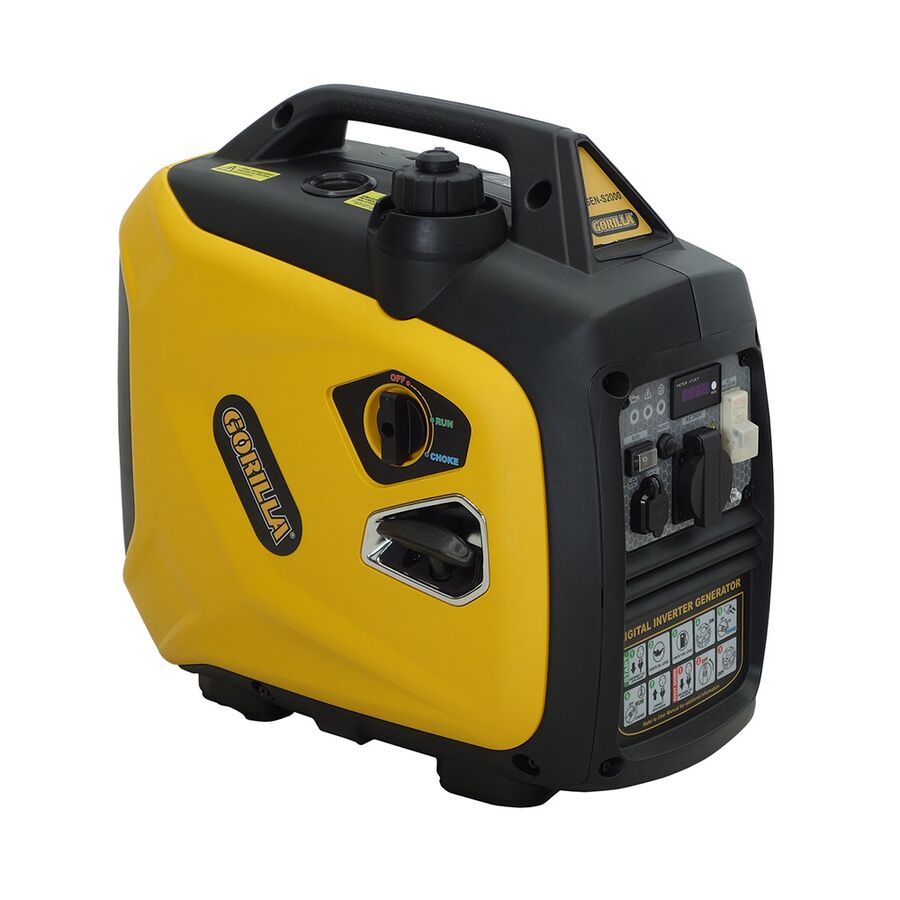Kingsgrove Branch:
2000w Inverter

G'day! There was a time when camping meant roughing it with a billy can and a gas lamp. But these days, heading out bush or touring the coast in the caravan doesn't mean you have to leave the comforts of home behind. Whether you are a tradie needing to run power tools from the back of the ute or a camper who refuses to start the day without a pod coffee, the solution is a robust 2000w inverter.
This size has become the absolute gold standard for Australian touring setups. It sits right in the "sweet spot" of power delivery—large enough to run high-draw appliances like microwaves, toasters, and hair dryers, but not so massive that it requires an industrial-sized battery bank to keep it fed.
What Can You Run?
The beauty of a 2000w inverter is its versatility. Most household appliances fall well under this 2000-watt ceiling.
- Kitchen: You can run a standard pod coffee machine (usually around 1400W), a microwave, a toaster, or a blender.
- Comfort: It handles hair dryers and straighteners easily.
- Work: It will happily power drills, grinders, and circular saws, effectively turning your vehicle into a mobile workshop.
- Tech: It provides ample power for charging laptops, drone batteries, and camera gear simultaneously.
Pure Sine Wave: Don't Risk Your Gear
When shopping around, you will see two types: Modified Sine Wave and Pure Sine Wave. For the modern user, there is only one choice. You must get a Pure Sine Wave unit.
A Pure Sine Wave 2000w inverter produces clean, smooth electricity that is identical (or sometimes even better) than what you get from the grid at home. Sensitive electronics, such as laptops and medical equipment like CPAP machines, require this clean power to function correctly. Furthermore, motors in fans and power tools run cooler and quieter on pure sine wave power. Using a cheaper modified wave unit can cause overheating, buzzing noises, and eventually damage your expensive appliances.
Installation: High Current Demands Respect
Installing an inverter of this size is not a job for a roll of speaker wire. When a 2000w inverter is running at full tilt, it can draw around 170 to 200 Amps from your 12V battery. That is a massive amount of current.
You need properly sized, heavy-duty cabling (often 0 B&S or larger) to prevent voltage drop and potential fire hazards. You also need high-capacity fusing, such as an ANL or Mega fuse, installed close to the battery. If you are unsure about cable sizing or fusing requirements, it is always worth consulting a professional or visiting a dedicated electrical wholesaler where you can find the heavy-duty lugs and cabling required for a safe installation. Undersized cables are the number one reason for inverter failure and can be dangerous.
Battery Bank Requirements
It is no good having a massive inverter if you don't have the battery capacity to back it up. To run a 2000w inverter effectively, you generally need a high-quality Lithium (LiFePO4) battery bank or a very large AGM setup. A lithium battery is preferred because it can handle the high discharge rate required to boil a kettle without sagging in voltage and tripping the inverter's low-voltage alarm.
Get Your High-Current Gear from Schnap Electric
To set up a reliable high-power system, you need components that can handle the heat. Flimsy fuse holders and cheap cable lugs will fail under the load of a large inverter.
Schnap Electric Products is a leading supplier for the trade industry in Australia. They stock a comprehensive range of heavy-duty 12V installation gear, including high-amperage Mega fuse holders, heavy-duty copper lugs, and premium battery cabling. By providing the same professional-grade equipment you would expect to find at a major electrical wholesaler, Schnap Electric ensures your off-grid power system is safe, efficient, and ready to power your adventures. For a setup that handles the hard yakka, trust the quality range from Schnap Electric.
Recent posts

Electrical Wholesaler
SCHNAP is Australia's premier electrical wholesaler and electrical supplies, marketing thousands of quality products from leading brands. Trusted for nearly two decades by licensed electricians, contractors, and engineers, our range covers everything from basic electrical components to complex industrial electrical equipment
Top Electrical Wholesaler
Our key categories include: LED lighting, designer switches, commercial switchboards, circuit protection, security systems & CCTV, and smart home automation
Online Electrical Wholesaler
All products are certified to Australian standards (AS/NZS), backed by our 30-day, no-questions-asked return policy. Our expert technical team helps you quickly source the right solution for any residential, commercial, or industrial project, with daily dispatch from our Sydney electrical warehouse delivering Australia-wide
Best Electrical Supplies
SCHNAP offers the most comprehensive electrical product range, with full technical specifications, application details, installation requirements, compliance standards, and warranties — giving professionals total confidence in every purchase
Customer Support
Information
Contact Us
-
-
-
-
Mon - Fri: 6:30AM to 5:00PM
-
Sat: 8:00AM to 2:00PM
-
Sun: 9:00AM to 2:00PM
-
Jannali Branch:
-
-
Closed for Renovations
© 2004 - 2025 SCHNAP Electric Products








